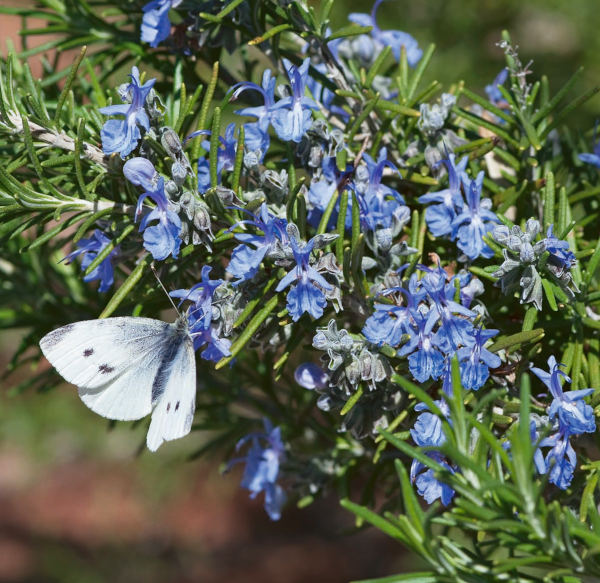How to grow Rosmarinus
Rosemary is a shrub which originated in the Mediterranean area and is now widely cultivated throughout the temperate regions both as perennial ornamental and as a culinary herb.
Rosmarinus, the botanical name, means sea- dew. This may come from its habit of growing close to the sea and the dew like appearance of its blossom when seen from a distance. It has been grown for centuries and is steeped in myth, magic and folk lore.
Rosmarinus officinalis is also known simply as Rosemary! It is a bushy shrub with a dense, leafy habit, and is quite variable in size – we supply ones with a height range of 30cm to 2m (and with spreads the same). Linear dark green leaves have long recurved margins and pale, felty undersides which often shimmer in silvery tones for magical impact. Leaves are either evergreen or semi-evergreen, dependent upon where you garden in the UK and the variety you have chosen.
Flowers usually pale violet-blue and white though we also supply darker purples and unusual pinks. Flowering starts in spring but is often repeated at differing times of year and can continue through into autumn. Blooms are extremely attractive to pollinators, particularly bees. Growth habits can be variable, from prostrate to upright, with an unusual weeping variety too.
Both flowers and foliage release herby oils which are prized for cooking and infusing. Whether grown to line a pathway, fill summer pots or add to a kitchen border, Rosmarinus is a well-known and much-loved Mediterranean shrub which is highly versatile in the garden. Plants are hardy to between -5°C and -15°C (H4 and H5) so choose where and how you plant them carefully in order to make the most of their perennial nature.

Zantedeschia is a genus of flowering plants from the family Araceae and is native to southern Africa. With a rich history dating back to the Ancient Romans, these deciduous or semi-evergreen perennials have been used as a symbol of celebration. Zantedeschia was Named after Professor Giovanni Zantedeschia, an Italian botanist.
There are two main forms of Zantedeschia: hardy and tender. Hardy forms of the plant can be grown outdoors, enjoy moist soil and full sun or partially shaded conditions - these are known as Arum lilies. Tender forms of Zantedeschia prefer being grown in containers or pots and should be brought inside over the winter - these are known as Calla lilies.
With tuberous flora in all colours from whites, yellows and oranges to deep reds and purples, Zantedeschias are not to be overlooked in any garden, as long as they have sufficient sunlight to grow in.
Ready to learn more about growing Zantedeschia? Read on for all there is to know...

Key Information
Soil pH
Position
Hardiness

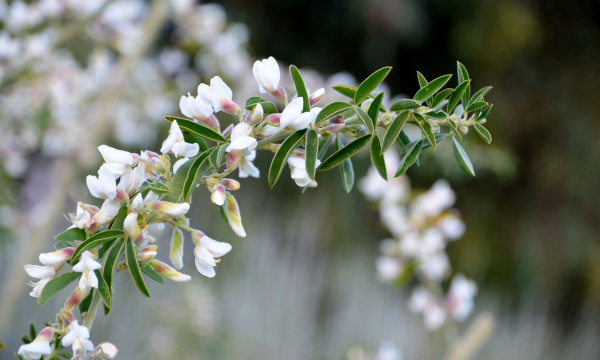
Where & when to plant Rosmarinus
Position - Full sun, with a few varieties able to cope with some shade
Soil - Well-drained soil
Flowering Period - February to September, dependent on variety
Hardiness - Hardy perennials
Spring is the ideal time to plant Rosmarinus officinalis when the soil is just starting to warm up which will allow your plants to settle in before they flower in early summer. Summer and autumn planting is also acceptable, although plants will need to be watered carefully during the summer whilst they establish a sustainable root structure and in autumn watch out for soggy weather and ensure your plants have sufficient drainage. Avoid planting in winter as young plants may rot in cold, wet ground.
Plants thrive in full sunshine, so be sure to pick a sunny spot from where you will enjoy their aromatics when you brush past, also mind the overall height and spread of your chosen variety and make sure it can spread without too much need for trimming. If you are planting as a hedge then, dependent on mature spread, ensure the plants will, eventually, knit together.
How to plant Rosmarinus
- Dig a hole for your plant twice as deep and wide as the pot it arrived in.
- Rosmarinus officinalis plants prefer poorer soil which is well-drained. If your soil is heavy clay, then add plenty of drainage to the planting holes in the form of coarse grit.
- Loosen your plant from its pot and place in the planting hole at the same depth as it sat in its pot.
- Fill around the edges with loose soil and firm in around the base of the plant before watering well. Water plants once or twice a week for the first few weeks until they are settled. Rosmarinus officinalis do not like to sit in wet earth and should not need watering once established unless in periods of extreme drought.
- Rosmarinus officinalis can also be grown in pots of peat-free loam-based compost or soil. Ensure the pot is large enough to accommodate your rosemary as it matures, has large drainage holes, and add plenty of crocks and grit to the bottom of the pot. Pot grown plants will require additional watering in dry periods.
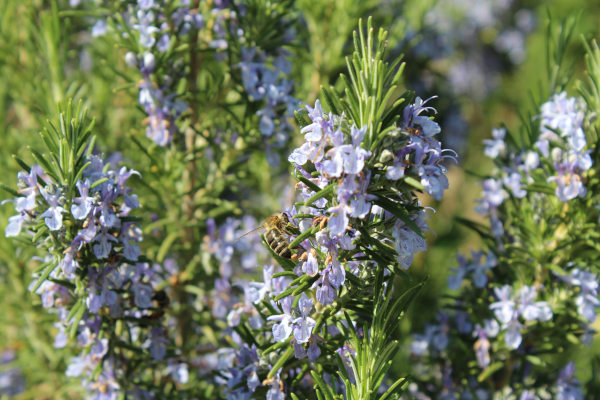
What to plant with Rosmarinus
It is no wonder sun-loving Rosemary has been adored by gardeners for centuries. These adaptable shrubs pair well with many others, adapting well to a sunny spot in the border, kitchen garden and any number of planting schemes.
Please contact our excellent Customer Care Team at Hayloft if you would like any help or planting tips for your Rosmarinus officinalis. Below are a few ideas to help get you started:
Herb Garden
Oregano, Thyme, Lavender, Mint, Basil, Sage, Marjoram
Prairie or Dry Garden
Echinacea, Stipa gigantea, Stipa tenuissima, Perovskia, Achillea, Euphorbia, Nepeta, Stachys byzantine, Phlomis, Sedum
Cottage or Traditional Garden
Roses, Alchemilla mollis, Foxglove, Fennel, Grasses, Oriental poppy, Bearded iris, Astrantia, Aquilegia, Hardy geranium, Geum, Hosta, Hydrangea, Salvia, Cardoon, Peony
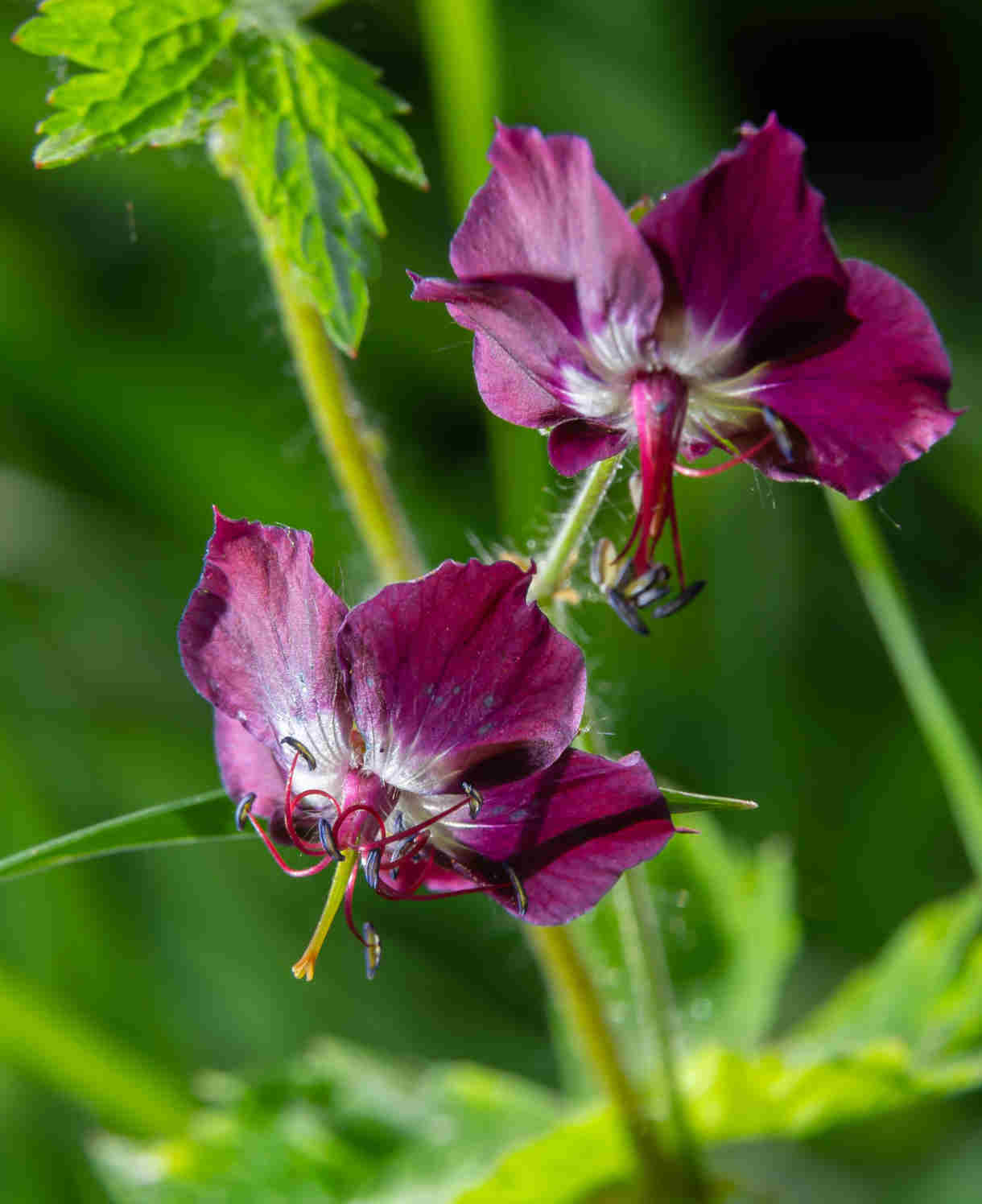
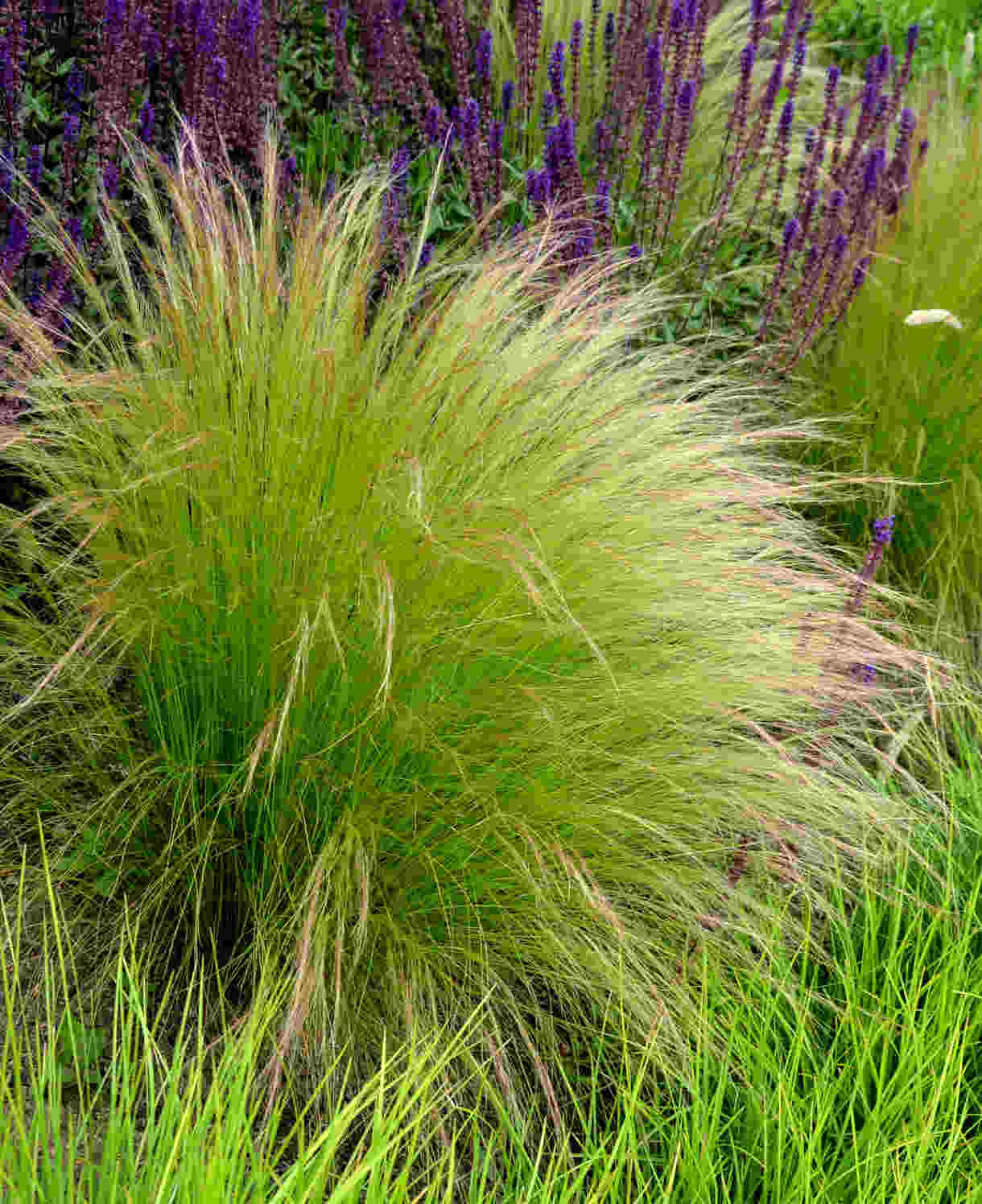

How to care for Rosmarinus
Pruning and Deadheading
Prune to shape as needed after flowering each year. If grown as a hedge, then a light trim at this time is also beneficial.
Watering & Feeding
Water moderately whilst plants are establishing themselves and during hot weather. No watering should be needed from then onwards as plants are drought tolerant. Plants in containers my need watering weekly during hot or dry weather. No additional feeding is required for plants in the ground unless plants show signs of deficiency. Pot grown plants will appreciate and annual feed with a balanced fertiliser just after flowering.
Cold Protection
Although reasonably hardy, plants may suffer in severe winters and in cold, exposed gardens. Pay particular attention to which variety you plant if this may be the case, some are hardier than others. Container grown plants my need huddling together and protection during exceptionally cold spells.
Pests and Diseases
Plants may be susceptible to rosemary beetle, scale insects, powdery mildews and root rot. Ensure plants have sufficient air circulation by pruning to an open shape and do not overwater or allow to sit is wet soil.
How to propagate Rosmarinus
You can easily increase your stock of Rosmarinus officinalis plants by taking semi-ripe cuttings or sowing from saved seed in a cold frame (commencing in spring).
Semi-ripe cuttings are best taken in summer.
- Choose non-flowering shoots which are 8-10cm long and remove them from the plant either with a sharp knife or by pulling gently, taking a piece of the tougher stem (heel) with it. Strip the leaves off from the bottom half of the cuttings.
- Fill a small pot with a mix of loam-based compost and grit and place your cuttings in the soil around the edge of the pot. Do not sink the cuttings in any deeper than the leaves. Water the pot lightly and cover with a clear plastic bag to retain humidity. Place the pot in a warm, sunny spot and the cuttings should root within 4 weeks.
- Once rooted, you can pot each cutting on into individual pots to grow on. Plants grown from cuttings will be identical to the parent plant.
Rosmarinus officinalis can also be grown from seed.
- Bought or harvested seed can be sown from early spring until mid-summer.
- Sow seeds onto the surface of seed compost and cover with a layer of vermiculite, or a thin layer of sieved compost.
- Water the seed tray well and cover with a clear plastic bag. A temperature of 21-25°C is required for germination, so a propagator, or sunny windowsill is the best spot if it is early in the season.
- Germination should occur within 2-4 weeks after which time the clear bag can be removed and once large enough to handle, the seedlings can be pricked out and grown on in individual pots.
- Plants grown from seed may not match the parent plant.
Common Rosmarinus Questions
Can you grow rosemary from cuttings?
Yes, semi-hardwood cuttings can be taken in late spring or early summer. See the instructions above.
How do you grow rosemary outside?
The rosemary we supply are H4 (-5 to -10°C) or H5 (-10 to -15°C) hardy. Dependent upon where you garden in the UK most plants are able to withstand the UK’s average winter temperatures. Just ensure that they do not sit in water during cold weather and, if growing in a pot, offer additional shelter as these plants are more susceptible to frosts.
How do I make rosemary bushier?
An annual trim after flowering will encourage your plant to become bushy. Snipping the 5-8cm off the ends of each branch will make the branch fork and help to fill out the tips.
